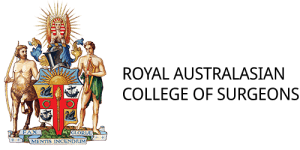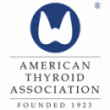THYROIDECTOMY PATIENT INFORMATION
Specialist Thyroid Surgeon in Canberra
Dr Ardalan Ebrahimi is one of the few specialist Thyroid (Endocrine) Surgeons based in Canberra. The patient information below will help you learn more about the thyroid gland, the reasons for needing thyroid surgery, what to expect before, during and after thyroidectomy, as well as answers to frequently asked questions.
Dr Ebrahimi's approach to thyroidectomy
The nerves to the voice box (recurrent laryngeal nerves) and the parathyroid glands that control calcium are located directly next to the thyroid. The risk of complications such as hoarse voice and low blood calcium are directly correlated to the skill and experience of your surgeon. Dr Ebrahimi minimises the risks of surgery to achieve the best possible outcomes with a combination of:
- Extensive experience performing thyroidectomy, including redo thyroid surgery and complex cancer cases requiring removal of lymph nodes (neck dissection), resection of the trachea (wind-pipe), nerve grafts and reconstruction.
- Routine pre-operative and post-operative vocal cord assessment using a state of the art fibre optic nasendoscope in the office.
- Routine use of intra-operative nerve integrity monitoring for all thyroid procedures.
- Meticulous surgical technique.
- Use of loupe magnification and a headlight to enhance visualisation.
What is the thyroid gland?
The thyroid is located in the lower part of the neck below the Adam’s apple (voice box), and is shaped like a butterfly with two lobes laying either side of the windpipe (trachea). The thyroid makes hormones (T3 and T4) that are secreted into the blood and carried to every tissue in the body. These hormones control the speed at which the cells in your body work. Too little (hypothyroidism) or too much (hyperthyroidism) can make you unwell.
Symptoms of an overactive thyroid (hyperthyroidism)
- Tiredness and muscle weakness
- Weight loss
- Intolerance to heat and sweating
- Diarrhoea
- Bounding rapid pulse or palpitations
- Insomnia
- Irritability or anxiety
- Increased appetite
- Tremor
Symptoms of an underactive thyroid (hypothyroidism)
- Tiredness
- Weight gain
- Cold intolerance
- Constipation
- Dry skin or hair loss
- Depression
- Impaired memory
- Menstrual disturbances
Thyroid nodules
Thyroid nodules occur when an abnormal growth of thyroid cells forms a lump (nodule) in the gland. When the thyroid contains multiple nodules and is enlarged, we call it a “multinodular goitre” which just means a large thyroid with multiple lumps. Thyroid nodules are incredibly common, especially with age and in females. On ultrasound scan, roughly half the population will have at least one thyroid nodule. The cause for nodules is not well understood, and although there is a link with iodine deficiency, this is uncommon in Australia. Fortunately, the majority (95%) of thyroid nodules are benign (non-cancerous) but most nodules need evaluation to ensure those that are cancerous are diagnosed and treated at an early stage.
Most thyroid nodules do not cause symptoms, even if they are cancerous, and are most often found incidentally when having scans such as ultrasound and CT scans for unrelated reasons. Although the majority of thyroids with nodules work normally (i.e. not underactive or overactive), you will need to have thyroid blood tests to confirm this. It is not possible to determine if a thyroid nodule is cancerous based on physical examination and blood tests. Because of this, nodules need to be evaluated with a focused ultrasound scan and any nodules that are large or have suspicious features need biopsy. The biopsy is called a Fine Needle Aspiration Biopsy (FNAB) and should be guided by an ultrasound scan. As the name suggests, a fine needle is used to take several samples of cells from the nodule to send for examination under a microscope by a pathologist. In those nodules that are biopsied, about 80% of the time the results come back benign (non-cancerous) and this is usually very reliable.
If thyroid nodules are benign and not causing any symptoms, they can be monitored with ultrasound. Thyroid nodules need treatment when they are cancerous or there is a suspicion of cancer based on biopsies, if they are large and causing pressure symptoms, narrowing the windpipe, growing into the chest, causing overactivity (hyperthyroidism) or are a major cosmetic problem.
Why do I need a thyroidectomy?
Thyroid surgery may be advised for a variety of thyroid conditions, including:
- To treat thyroid cancer confirmed on needle biopsy
- When a thyroid nodule contains atypical cells on needle biopsy and may be cancerous
- Nodules or large thyroid glands (goiters) that are causing pressure symptoms (such as a choking or pressure sensation, difficulty swallowing or breathing and cough)
- If the thyroid is narrowing the windpipe (tracheal compression) or growing into the chest (retrosternal extension) and poses a risk of airway obstruction
- For cosmetic reasons if you feel the thyroid nodule or goiter is unsightly
- For some patients with an overactive thyroid, surgery is the best treatment. Particularly if medications or radioactive iodine either can’t control it, are contraindicated for medical reasons, or are causing side effects.
We will discuss the reasons for recommending surgery in your case and whether alternatives such as monitoring of the thyroid or non-surgical treatment are options. There are several thyroid operations that are typically performed, including:
- Hemithyroidectomy (or thyroid lobectomy): removing half of the thyroid gland.
- Total thyroidectomy: this involves removal of all identifiable thyroid tissue.
Will I need thyroid tablets after thyroid surgery?
This depends on how much of the thyroid is removed. In most patients having hemithyroidectomy (roughly 85-90%), the remaining half of the thyroid makes enough thyroid hormones that they do not need tablets. In contrast, all patients undergoing total thyroidectomy need lifelong thyroid hormone (thyroxine) tablets.
Thyroxine is started the morning after surgery for patients undergoing total thyroidectomy. It should be kept refrigerated (unless you are taking a newer formulation of thyroid hormone) and taken on an empty stomach at least 30 minutes before breakfast with water. Milk, food, calcium tablets, and other tablets can interfere with your bodies ability to absorb thyroxine. Six weeks after surgery we will arrange blood tests to check your thyroid hormone levels and if needed, adjust your dose, based on the results and how you’re feeling. For many patients it can take a number of dose adjustments over several months to stabilize the dose. Thyroxine is a very slow acting medication so if you miss a day it won’t cause any problems.
Will I have an anaesthetic?
Yes, all thyroid surgery is performed under a general anaesthetic (you will be asleep). You should have nothing to eat or drink from midnight on the day before surgery (unless advised differently by your health care team) and should leave valuables and jewellery at home.
The side effects of the anaesthetic may include nausea and sore throat, which settle down soon after surgery and will be treated with medications. General anaesthetic is extremely safe but does carry a very small risk of serious complications.
Will I have a scar from thyroidectomy?
You will have a scar, which may be red for a few months, before fading to a thin line. When possible, the incision is placed in a skin crease to make it inconspicuous and it is kept as small as possible based on the size of your thyroid and the underlying reason surgery is required.
Very rarely, the scar can become thickened and red (keloid scar). This results mainly from patients skin type and a predisposition to keloid scarring. Let us know if you tend to scar badly as steps can be taken to reduce the risk of keloid. You will be given instructions on managing the scar after surgery to maximize the chances that it heals nicely.
Will I have pain after thyroid surgery?
Patients are generally surprised at how little pain they have after thyroidectomy. Most patients take panadol to keep them comfortable at home but you will be given a prescription for something stronger in the first few days in case you need it. Most patients notice a sore throat for a few days because of the breathing tube placed during the operation. Stiffness or pain in the back of the neck sometimes occurs because of the position of the neck during surgery and may last a week or two.
What can I expect during and after thyroidectomy?
The recovery from thyroid surgery is smooth and relatively quick for most patients. On the day of surgery you will arrive at hospital and be prepared for surgery. You must ensure you’ve had nothing to eat for at least 6 hours before your surgery. Clear liquids are ok until two hours before surgery. You will meet your anaesthetist before the surgery and Dr Ebrahimi will see you also. The surgery usually takes 2-3 hours, after which time you will slowly wake up in the recovery room. Once you are fully awake, you will be moved to a bed in a hospital room where you will be able to eat and drink as you wish. Some patients experience nausea after anaesthetic which will be treated with medications. This usually settles by the next morning. Most patients having thyroidectomy are hospitalised overnight and discharged on the morning following surgery, though some may need to stay in hospital for several days.
Surgery is usually performed through an incision in the lower neck. Dr Ebrahimi does not routinely use a surgical drain, however, they are occasionally required and can usually be removed the morning after surgery. Most patients are surprised at how little pain they have after thyroidectomy and take panadol to keep them comfortable at home but you will be given a prescription for something stronger in the first few days in case you need it. It is common to notice a sore throat for a few days because of the breathing tube placed during the operation. Stiffness or pain in the back of the neck sometimes occurs because of the position of the neck during surgery and may last a week or two.
Are there any risks from thyroid surgery?
In experienced hands, thyroid surgery is very safe, however, all surgery carries some risk. Some risks can occur after any surgery such as infection, pneumonia, or blood clots in the legs or lungs. However, these are rare after thyroid surgery. The most serious possible risks of thyroid surgery include bleeding, voice change and low blood calcium levels. These complications occur more frequently in patients having cancer surgery, redo thyroid surgery, and in patients with very large goiters that go below the collarbone (retrosternal).
Bleeding
There is a small risk (less than 1%) of bleeding into the space where the thyroid used to be after surgery. Even a small amount of blood collecting around the throat can cause breathing problems and be an emergency. If this happens, it may be necessary to have a second operation to remove the blood to prevent respiratory distress. In patients that bleed, this usually happens in the hours after surgery so it is extremely rare after you are discharged home.
Voice Change
The nerves to the voice box (recurrent laryngeal nerves and external laryngeal nerve) run next to the thyroid on each side of the wind-pipe. Dr Ebrahimi uses a special nerve monitor during thyroid surgery with a neuromonitor and neurostimulator to ensure all the nerves are identified and kept safe.
Very minor voice change can occur in some patients after thyroid surgery despite the nerves working normally, but this almost always gets better with time. Injury to the recurrent laryngeal nerves (main nerves for the voice box) can cause paralysis of the vocal cord resulting in a breathy hoarse voice that is weak and tires easily. With the combination of years of experience, meticulous technique, nerve monitoring and surgery performed under loupe magnification, this is extremely rare in Dr Ebrahimi’s hands, with the chances of permanent nerve injury after thyroidectomy less than 0.5%. Injury to less important nerves (external laryngeal nerve) supplying the voice-box may lead to more subtle voice changes such as mild huskiness, difficulty projecting the voice or an inability to sing high notes. Again, if this occurs it often gets better with time and permanent problems are very uncommon.
Low Blood Calcium
The parathyroid glands are tiny delicate glands that control the level of calcium in your blood and sit on the thyroid. If they don’t work properly, you will develop low blood calcium levels and need tablets. Since these glands are easily bruised, there is a 5-10% risk that your blood calcium level will drop after total thyroidectomy and you will need to stay in hospital until it is corrected with medications. Usually this is temporary, but there is a 1-2% chance that the parathyroids do not recover and you need to continue taking calcium tablets for life. Low blood calcium levels do not occur after hemithyroidectomy. After surgery, blood tests will be done to check your blood calcium.
Wound Infection
This is uncommon and usually easily treated with oral antibiotics
Seroma
This is a painless swelling due to fluid collecting under the skin in the first week or two after surgery. It occurs in less than 5% of patients but is more common with large goiters. It is treated simply by draining the fluid in the office.
Keloid Scar
These are thick, raised red scars. It is rare in Caucasians but relatively common in patients of Asian or African descent, particularly when young.
How do I care for the thyroidectomy wound at home?
The wound will have sutures under the skin that you cannot see. These will dissolve over time and do not need to be removed. You will have a waterproof dressing over the wound. Leave this intact and Dr Ebrahimi will remove it during your first post-operative visit in the office about two weeks after surgery. If the dressing starts to fall off or get messy, you can remove it after 7 days and do not need to replace it. You can shower as normal after you get home and gently pat the neck dry. It does not matter if the wound gets wet but you should avoid swimming and baths for 2 weeks. Avoid wearing tight clothing around your neck for a few weeks after surgery.
You may notice numbness around the incision. This is common and will gradually improve over time. Wound healing sometimes causes itching that can last for several weeks. You may have minor swelling or bruising after surgery. This is common and may last for weeks or months.
The incision will leave a scar, although these usually heal quite nicely. At your first post-operative visit we will discuss what to apply to the wound to help avoid a noticeable scar. If you have a history of developing bad scars or keloids, be sure to let Dr Ebrahimi know. It may take 6-12 months for the wound to settle down and the pink colour to fade. You should avoid sun exposure to the wound during this time when possible or use sun screen.
When can I resume normal activity after thyroidectomy?
Normal activity can begin on the first postoperative day. Vigorous sports, swimming and activities that include heavy lifting should be delayed for at least 2 weeks. Most patients can safely drive again 1 week after thyroidectomy, but this depends on your comfort levels turning your neck.
When can I return to work after thyroid surgery?
You should be able to return to work after 1-2 weeks unless your job requires strenuous manual labour, in which case you may need up 3-4 weeks.
What symptoms should I be worried about after thyroidectomy?
After your thyroid surgery, if you experience any of the following symptoms please contact Dr Ebrahimi (you will be given his mobile number before discharge from hospital) or present to your nearest Emergency Department:
- Significant neck swelling, especially if there is also difficulty breathing or swallowing. Call an ambulance.
- A tingling sensation around your mouth, fingers or toes. This may mean your calcium levels are low.
- Cramps, muscle spasms or lightheadedness. This may mean your calcium levels are very low.
- Pain, swelling or redness of the incision. You may have a wound infection and need antibiotics.
- A temperature ≥ 38.5 degrees or chills and rigors. You may have an infection and require antibiotics. See your GP as a first step if you are not unwell.














